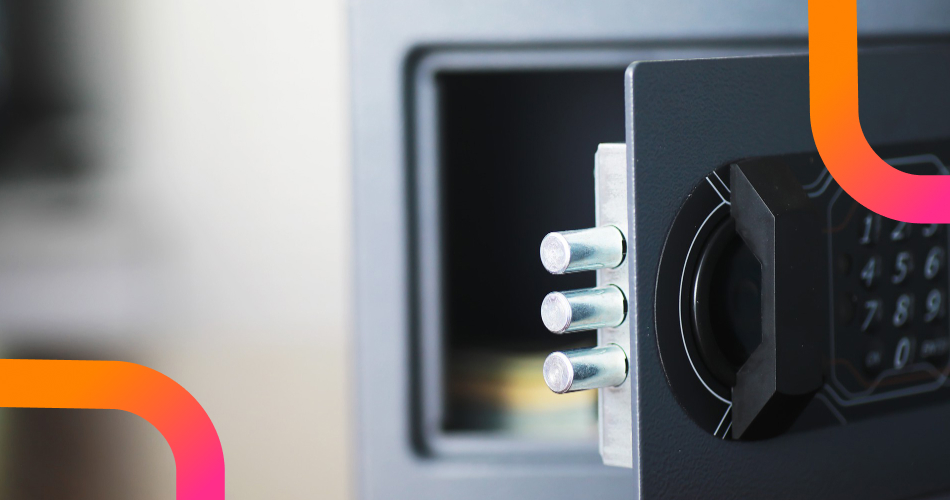The DORA Directive, the MiCA regulation, new obligations for fintechs… European regulations in 2025 are requiring businesses to strengthen their digital evidence trails. Document fraud costs over €65 billion each year, equivalent to 2.5% of GDP[1]. At the European level, the European Public Prosecutor’s Office reported over 2,000 active fraud-related investigations at the end of 2024, with estimated damages of €24.8 billion[2].
In this context of industrial-scale document fraud, amplified by generative AI, simply storing a file is no longer enough. Companies must now be able to prove a document’s authenticity and integrity to protect themselves against disputes and tampering.
Faced with these requirements, two solutions stand out in the field of document management: the digital safe and electronic archiving. Yet their purposes differ significantly. Confusing the two may seem harmless, but it could expose you to genuine legal risks, especially during audits or litigation.

Sommaire
- The digital safe: security and simplicity above all
- Electronic archiving: a comprehensive approach to document management
- Digital safe vs. EAS
Key points to remember
- A digital safe secures sensitive documents with ease but does not manage the full document lifecycle.
- Electronic archiving (EAS) handles the entire document lifecycle with strong legal evidential value.
- Qualified archiving, regulated under eIDAS v2 and the CEN/TS 18170 standard, provides the highest level of legal assurance.
- The right choice depends on document volume, sector-specific regulatory requirements, and available budget.
- A preliminary audit and expert guidance are recommended to properly size your project.
The digital safe: security and simplicity above all
How does a digital safe work?
A digital safe (DS) is an ultra-secure storage space that guarantees the integrity and traceability of the documents stored within it. Much like its physical counterpart, it protects sensitive information against unauthorised access.
A digital safe relies on four key pillars: data encryption, strict multi-factor authentication, full access logging, and systematic timestamping. In other words, every action is tracked, and each file carries its unique digital fingerprint.
When a document is uploaded to the digital safe, the system generates a unique cryptographic hash. This serves as the document’s digital DNA. Any subsequent modification would be immediately detectable.
Advantages and use cases of a digital safe
A digital safe offers three main benefits:
- Ease of use: its interface is designed to be accessible without advanced technical training.
- Maximum data protection: sensitive data is safeguarded through encryption and access controls.
- Secure remote access: authorised users can access files from any web browser using strong authentication and encrypted connections.
Typical use cases include payslips (legally required in digital form since 2017), employment contracts, sensitive HR documents, bank statements, and invoices with legal value.
Limitations of a digital safe
However, a digital safe has several limitations:
- No automated document lifecycle management: retention rules are not applied based on document type
- No scheduled secure destruction once legal retention periods expire
- No validation workflows or version control
- It is primarily a secure storage space, not a complete document management system
For example, a small pharmaceutical company stores batch records in a digital safe. During an inspection by the French National Agency for the Safety of Medicines (ANSM), it must prove that these documents have never been altered. The issue is that the digital safe can demonstrate integrity at the time of deposit but cannot provide full traceability of access and consultations. An electronic archiving system, by contrast, would maintain a complete historical record.
Electronic archiving: a comprehensive approach to document management
What is an Electronic Archiving System?
An Electronic Archiving System (EAS) goes far beyond simple storage. It manages the entire document lifecycle, from initial deposit to final destruction, including all intermediate retention phases.
Where a digital safe focuses on securing storage, an EAS includes record management functions[3]: automatic classification, retention periods configured by document type, granular access rights management, and secure destruction compliant with legal obligations.
Electronic archiving also exceeds basic backup, which aims to restore data in case of failure. EAS ensures both the legal evidential value and long-term regulatory retention of documents.
Requirements for compliant electronic archiving
In France, the NF Z42-013 standard, published by AFNOR in 2009 and transposed internationally as ISO 14641 in 2012, defines technical and organisational requirements for electronic archiving, guaranteeing document integrity, traceability, and longevity. AFNOR also offers NF 461 certification for EAS compliance. Using a certified provider ensures your system meets recognised standards and undergoes regular independent audits, reinforcing trust in the legal validity of archived documents.
The three stages of the archiving process must meet these conditions:
- Document deposit: integrity check, mandatory metadata validation, assignment of a unique and permanent identifier.
- Document preservation: integrity maintenance via regular checks, monitoring technological obsolescence, redundant backups.
- Document retrieval: facilitated search through indexing, compliant export with proof of authenticity, generation of deposit slips.
Article 1366 of the French Civil Code sets three cumulative conditions for an electronic document to have the same evidential weight as paper: identifying the issuer, guaranteeing integrity, and preserving it under conditions that maintain integrity. Without meeting these, the document risks being excluded as evidence in legal proceedings.
An EAS combines multiple technologies to meet these requirements: eIDAS qualified timestamping to prove the document’s existence at a given moment, electronic signatures to confirm the signatory’s identity, and cryptographic hashes to detect any alteration.
Qualified Electronic Archiving: beyond simple preservation
Qualified electronic archiving represents the pinnacle of digital preservation. It relies on services provided by Trust Service Providers (TSPs) certified under eIDAS v2.
The European CEN/TS 18170 technical standard, published in April 2025, serves as the reference to ensure document integrity, authenticity, and traceability. The European Commission’s adoption of the implementing act is expected by the end of 2025.
Qualified archiving is certified by accredited bodies, such as COFRAC in France. TSPs undergo regular audits verifying security procedures, technical controls, and compliance documentation. Documents stored in a qualified EAS benefit from enhanced integrity presumption: in case of dispute, the opposing party must prove the document has been altered. This legal recognition ensures its admissibility in court.
TSPs are contractually responsible and must ensure continuity of service, even in case of technical failure. Reversibility is fundamental: if you change providers, you can retrieve all your archives in a usable format. Qualified EAS also monitors file format obsolescence, with preventive migration to enduring formats (PDF/A, structured XML) to guarantee readability for decades.
Digital safe vs. EAS
Tableau comparatif
| Criteria | Digital Safe | Electronic Archiving (EAS) |
| Main purpose | Securing sensitive documents | Complete document lifecycle management |
| Ease of use | Simple interface, accessible without technical training | Complex interface; training required |
| Features | Secure storage, integrity, traceability | Lifecycle management, classification, automated destruction, workflows |
| Regulatory compliance | NF Z42-020 | NF Z42-013 / ISO 14641 + eIDAS 2 (for qualified archiving) + sector standards |
| Legal evidential value | Integrity at deposit | Integrity, authenticity, and traceability throughout lifecycle |
| Cost | Moderate | Higher |
| Scalability | Limited | High (handles large volumes and growth) |
| Document volume/type | Limited sensitive documents | Large volumes, diverse document flows, automated |
| Sector-specific regulations | Meets standard obligations | Suitable for highly regulated sectors (DORA, HDS, GDPR) |
| Functional needs | HR or contractual documents without complex workflows | Validation workflows, multi-criteria search, collaborative management |
When to choose each solution
Digital safes are ideal for SMEs with limited document needs, prioritising simplicity, particularly for HR or contractual documents without complex workflows. Electronic archiving is suited to large enterprises managing high volumes, regulated sectors (finance, healthcare, public sector), and organisations requiring full lifecycle traceability.
Conclusion
Choosing between a digital safe and electronic archiving is not merely a technical decision. It impacts regulatory compliance, the evidential value of your documents, and your ability to defend yourself in legal disputes.
Start with a document audit: what types of documents do you store? What are your sector-specific legal obligations? What volumes do you handle? Expert guidance in document management will help you properly size your project.
A phased approach is also possible: begin with a digital safe to secure your most sensitive documents, then evolve to a full EAS as your needs grow.
References
[1] Etude fraude 2022 Allianz Trade x DFCG (https://www.allianz-trade.fr/actualites/etude-fraude-2022.html) ; Rapport 2025 de l’Observatoire Tessi de la fraude documentaire (https://www.tessi.eu/fr/observatoire-tessi-de-la-fraude-documentaire/)
[2] Rapport annuel 2024 du Parquet européen : https://www.eppo.europa.eu/sites/default/files/2025-06/EPPO%20Annual%20Report%202024%20PDF_FR.pdf
[3] Gestion documentaire
Disclaimer
The opinions, presentations, figures and estimates set forth on the website including in the blog are for informational purposes only and should not be construed as legal advice. For legal advice you should contact a legal professional in your jurisdiction.
The use of any content on this website, including in this blog, for any commercial purposes, including resale, is prohibited, unless permission is first obtained from Evidency. Request for permission should state the purpose and the extent of the reproduction. For non-commercial purposes, all material in this publication may be freely quoted or reprinted, but acknowledgement is required, together with a link to this website.


